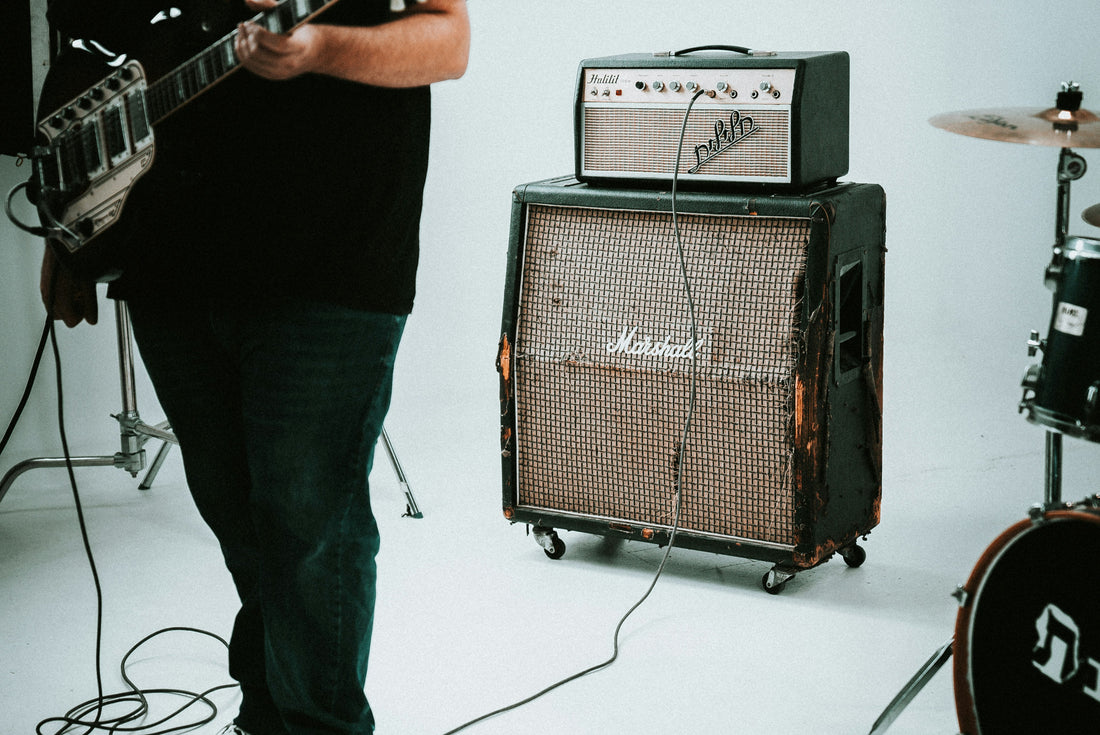Whether you're a budding musician, a seasoned performer, or anywhere in between, finding the right amplifier is crucial to perfecting your sound on stage and in the studio. At Risko Music, we pride ourselves on our extensive inventory of amplifiers, featuring a wide range of models from tube to solid-state to modeling amps, ensuring that you find the perfect match for your musical needs and preferences.
We understand that choosing an amplifier can come with many questions, from figuring out the appropriate wattage for different venues to the specifics of amp maintenance. To help you make an informed decision and get the best out of your purchase, we've compiled a list of some of the most common questions we receive from our customers. Our team at Risko Music has a wealth of experience and knowledge that we are eager to share with you.
Whether you're considering your first purchase or looking to upgrade your current setup, the following FAQs will guide you through the nuances of amplifier types, choices, care, and troubleshooting. Let's dive into these questions to help you enhance your musical journey with the perfect amplifier from Risko Music.
1. What types of amplifiers are there?
Answer: There are mainly three types of amplifiers:
- Tube Amplifiers: These use vacuum tubes to amplify the sound. They are known for their warm, rich tones and are favored in genres like blues and rock.
- Solid-State Amplifiers: These use transistors for sound amplification. They are generally more reliable and durable than tube amps and provide a cleaner sound.
- Modeling Amplifiers: These digital amps use software to emulate the sound of tube amplifiers and often come with various effects and sound options built-in.
- Hybrid Amplifiers: These combine tube and solid-state technologies, typically using a tube preamp with a solid-state power amp.
2. What should I look for when choosing an amplifier?
Answer: Consider the following factors:
- Power Rating: Higher wattage amps produce more volume without distortion. Choose wattage based on venue size — smaller gigs typically require 20-50 watts, while larger venues may require 100 watts or more.
- Speaker Size: Common sizes include 8", 10", 12", and 15". Larger speakers generally provide better bass response.
- Channels and Inputs: Multiple channels can accommodate different instruments or separate sound settings. Ensure there are enough inputs for all your needs.
- Portability: If you move your amp often, consider its weight and size.
- Additional Features: Effects loops, built-in effects, and headphone outputs can be beneficial for practicing and live performance setups.
3. Tube vs. Solid-State vs. Modeling: Which is better?
Answer: The "best" type depends on your needs:
- Tube Amps are preferred for their warm, natural sound and responsiveness but require more maintenance.
- Solid-State Amps offer more reliability and consistency and are generally less expensive.
- Modeling Amps provide versatility with various effects and tones available in one unit; great for players who like to experiment with sounds.
4. How do I care for and maintain my amplifier?
Answer:
- Regular Cleaning: Dust and clean your amp regularly to avoid any build-up that can affect sound quality.
- Tube Replacement and Biasing: For tube amps, periodically check and replace tubes to maintain tone and performance. Biasing should be done by a professional.
- Transport Safely: Use appropriate cases or covers when transporting your amp to protect it from physical damage.
- Avoid Moisture and Extreme Temperatures: Store your amp in a dry place and avoid exposing it to drastic temperature changes.
5. What are some common problems with amplifiers and how can I troubleshoot them?
Answer:
- No Sound: Check all connections, ensure the amp is turned on, and inspect the power supply and fuses.
- Hum or Buzz: This often indicates grounding issues. Check cables for damage or try a different electrical outlet.
- Distortion or Crackling: This can be due to a failing tube in tube amps; test and replace if necessary. In solid-state, it could indicate damaged components.
- Intermittent Sound: Loose connections or faulty jacks can cause this. Check and tighten all connections.
6. Can I use the same amp for different instruments?
Answer: Yes, many amps are versatile enough to be used with various instruments, such as electric guitars, bass guitars, and even keyboards. However, certain amps are optimized for specific instruments, e.g., bass amps for bass guitars, which handle lower frequencies better.
7. How does the size of the venue affect my amplifier choice?
Answer:
- Small Venues: Smaller amps (e.g., 20-50 watts) are typically sufficient.
- Medium Venues: Consider something with a bit more power, around 50-100 watts.
- Large Venues or Outdoor Settings: 100 watts or more may be necessary to achieve adequate sound levels.
8. What is 'headroom' in an amplifier context?
Answer: Headroom refers to the ability of an amplifier to handle peaks in the music signal without distorting. Higher wattage amps generally provide more headroom, meaning you can play louder and cleaner before the sound starts to distort.
Still Have Questions?
At Risko Music, our knowledgeable experts are always ready to offer personalized advice to help you find the perfect amplifier for your needs. With over 20 years of experience in the music industry, our team is here to assist you through every step of the buying process. Whether you need help choosing the right model, understanding features, or even troubleshooting, we've got you covered. Don’t hesitate to give us a call at 914-762-8757 and let us help you make an informed decision with ease.


